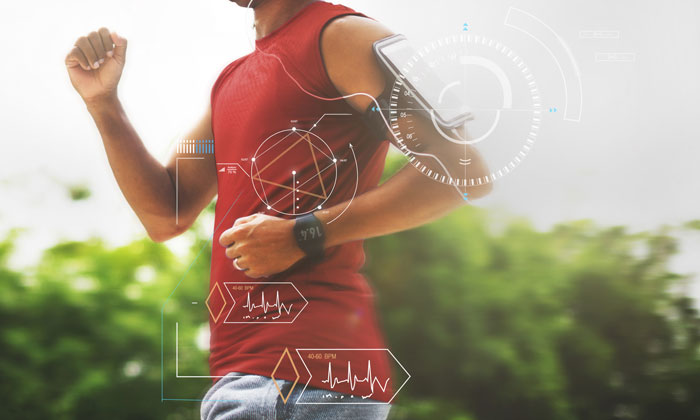Researchers use smartphone data in global study of physical activity
Posted: 11 July 2017 | Sarah Wills (Drug Target Review) | No comments yet
Researchers at Stanford University in Palo Alto, California, have tracked physical activity by population for more than 100 countries.


Their research, funded by the National Institutes of Health, follows on a recent estimate that more than 5 million people die each year from causes associated with inactivity.
The large-scale study of daily step data from anonymous smartphone users dials in on how countries, genders, and community types fare in terms of physical activity and what results may mean for intervention efforts around physical activity and obesity. The study was published on 10 July 2017, in the advance online edition of Nature.
“Big data is not just about big numbers, but also the patterns that can explain important health trends,” said Grace Peng, Ph.D., director of the National Institute of Biomedical Imaging and Bioengineering (NIBIB) program in Computational Modelling, Simulation and Analysis.
“Data science and modelling can be immensely powerful tools. They can aid in harnessing and analysing all the personalised data that we get from our phones and wearable devices.”
Biomarkers aren’t just supporting drug discovery – they’re driving it
FREE market report
From smarter trials to faster insights, this report unpacks the science, strategy and real-world impact behind the next generation of precision therapies.
What you’ll unlock:
- How biomarkers are guiding dose selection and early efficacy decisions in complex trials
- Why multi-omics, liquid biopsy and digital tools are redefining the discovery process
- What makes lab data regulatory-ready and why alignment matters from day one
Explore how biomarkers are shaping early drug development
Access the full report – it’s free!
Almost three quarters of adults in developed countries and half of adults in developing economies carry a smartphone. The devices are equipped with tiny accelerometers, computer chip that maintains the orientation of the screen, and can also automatically record stepping motions. The users whose data contributed to this study subscribed to the Azumio Argus app, a free application for tracking physical activity and other health behaviours.
In their study, Scott L. Delp, Ph.D., James H. Clark Professor of Bioengineering and director of the Mobilize Center at Stanford University, and colleagues analyzed 68 million days of minute-by-minute step recordings from 717,527 anonymous users of the smartphone app. Participation spanned 111 countries, but the researchers focused their study on 46 countries, each with at least 1,000 users. Of those, 90% of users were from 32 high income countries and 10% were from 14 middle income countries.
“The study is 1,000 times larger than any previous study on human movement,” said Delp. “It provides data from more countries, many more subjects, and tracks people’s activity on an ongoing basis in their free-living environments versus a survey in which you rely on people to self-report their activity.”
In addition to the step records, the researchers accessed age, gender, and height and weight status of users who registered the smartphone app. They used the same calculation that economists use for income inequality – called the Gini index – to calculate activity inequality by country.
“In regions with high activity inequality there are many people who are activity poor, and activity inequality is a strong predictor of health outcomes,” commented Delp.
Globally, the average user recorded about 5,000 steps per day. The smartphone data reflected the degree of difference, or inequality, for activity among people within a given country. By comparing countries with more uniform activity patterns and those with unequal activity, certain patterns and health dynamics emerged. For instance, countries with the greatest activity inequality are also the countries with the greatest obesity problem. Individuals in the five countries with the greatest activity inequality are nearly 200% more likely to be obese than individuals from the five countries with the lowest activity inequality.
The average activity – measured in steps counted by smartphone accelerometers – is equivalent for people in the United States and Mexico, for example. But individuals in the United States reflect a wider range of activity levels than those in Mexico. This wider gap between active and sedentary people corresponds with higher prevalence of obesity in the United States overall.
The authors suggest that this inequality is an important target for obesity intervention. Using a computer simulation, they showed that targeted interventions could result in up to a four times greater reduction in obesity than non-targeted approaches.
The researchers report that countries with greater activity variation also have a larger proportion of inactive women. They found that in countries where activity is more uniform among members of the population, such as Japan, males and females are similarly active. But in countries with greater activity disparity, such as Saudi Arabia and the United States, there is disproportionately reduced activity for females. In fact, the gender gap accounts for 43% of activity inequality in those countries, according to the authors. They also found that the prevalence for obesity increases faster for females than males as population-wide activity decreases.
The researchers investigated the idea that making improvements in a city’s walkability – creating an environment that is safe and enjoyable to walk – could reduce activity inequality and the activity gender gap.
Data from 69 U.S. cities showed that higher walkability scores are associated with lower activity inequality. Higher walkability is associated with significantly more daily steps across all age, gender, and body-mass-index categories. However, the researchers found that women recorded comparatively less activity than men in places that are less walkable.
The study exemplifies how smartphones can deliver new insights about key health behaviours, including what the authors categorise as the global pandemic of physical inactivity.
Related topics
Informatics
Related conditions
Obesity
Related organisations
National Institutes of Health (NIH), Stanford University
Related people
Grace Peng, James H. Clark, Scott L. Delp








